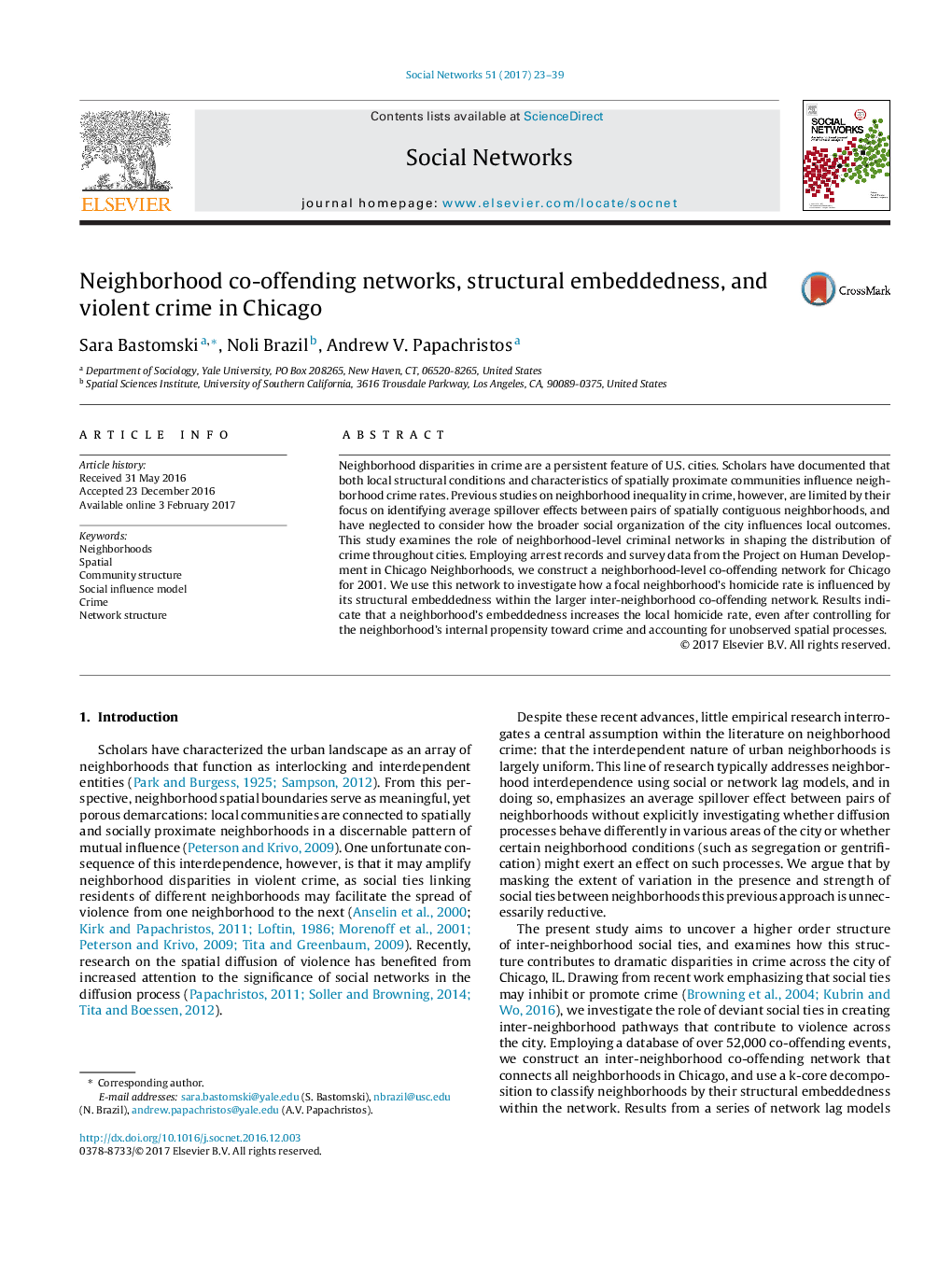| کد مقاله | کد نشریه | سال انتشار | مقاله انگلیسی | نسخه تمام متن |
|---|---|---|---|---|
| 5126755 | 1488848 | 2017 | 17 صفحه PDF | دانلود رایگان |
• A new approach for studying the diffusion of neighborhood violence is proposed.
• This approach employs a hierarchical network algorithm to classify neighborhoods.
• This classification scheme helps explain disparities in neighborhood violence.
Neighborhood disparities in crime are a persistent feature of U.S. cities. Scholars have documented that both local structural conditions and characteristics of spatially proximate communities influence neighborhood crime rates. Previous studies on neighborhood inequality in crime, however, are limited by their focus on identifying average spillover effects between pairs of spatially contiguous neighborhoods, and have neglected to consider how the broader social organization of the city influences local outcomes. This study examines the role of neighborhood-level criminal networks in shaping the distribution of crime throughout cities. Employing arrest records and survey data from the Project on Human Development in Chicago Neighborhoods, we construct a neighborhood-level co-offending network for Chicago for 2001. We use this network to investigate how a focal neighborhood’s homicide rate is influenced by its structural embeddedness within the larger inter-neighborhood co-offending network. Results indicate that a neighborhood’s embeddedness increases the local homicide rate, even after controlling for the neighborhood’s internal propensity toward crime and accounting for unobserved spatial processes.
Journal: Social Networks - Volume 51, October 2017, Pages 23–39
